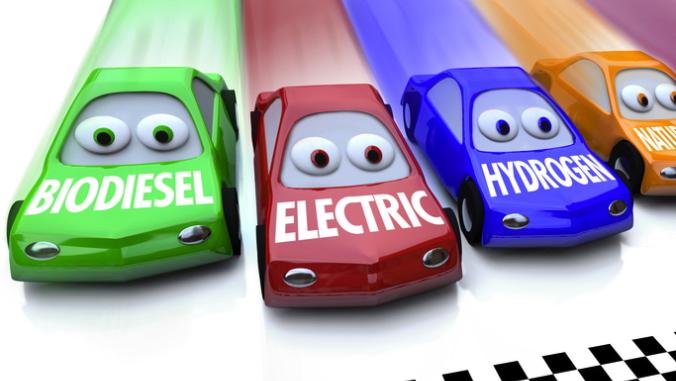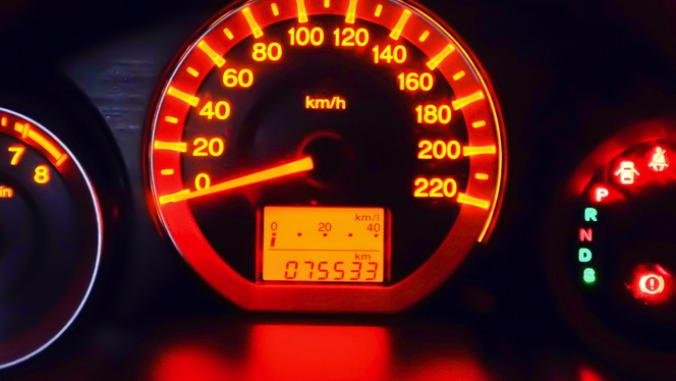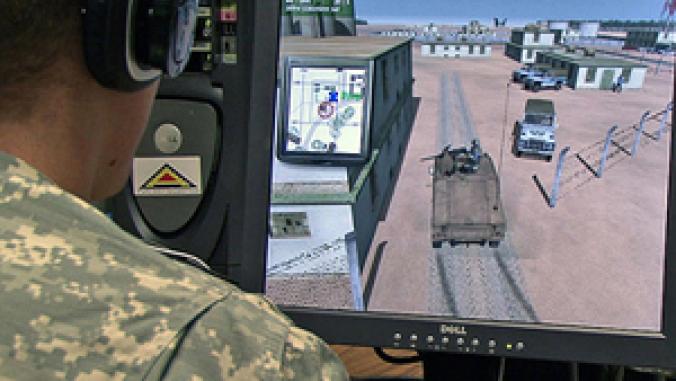Counting Carbon at Madison Square Garden
Deutsche Bank and MIT unveiled the world's first scientifically valid, real-time display of greenhouse gas emissions in the atmosphere.

Deutsche Bank unveiled a giant billboard in New York City yesterday as part of a public awareness campaign to educate Americans about rising greenhouse gas emissions.
The bank hopes the mammoth Carbon Counter launched by its Asset Management division and Massachusetts Institute of Technology (MIT) will spur action and convey a sense of urgency, executives said during its unveiling Thursday. The 70-foot tall device, which sits outside Madison Square Garden, is billed as the world’s first scientifically valid, real-time emissions display.
“The counter is important because it’s the first real-time calculation for greenhouse gases going up into the atmosphere,” Deutsche Bank’s Kevin Parker said before switching on the counter. “This is important because every second we put 800 metric tons of greenhouse gases into the atmosphere -- every second, of every minute, of every day, of every year.”
So what will this mean for the average passersby, which, according to some reports, may exceed 500,000 every day?
They will probably notice two things: The number is huge -- 3.64 trillion (tons of greenhouse gases) when the counter was turned on Thursday -- and growing at an ominously fast clip.
Ceres President Mindy Lubber argued in a column yesterday on the Huffington Post that the device brings the hidden costs of our ravenous energy consumption into the open by tallying the gathering greenhouse gas emissions in our atmosphere.
“By doing so it also exploits a key insight about human behavior that's been documented by behavioral economists: When the price of costly activities is no longer hidden from humans we're more likely to pursue those activities prudently,” Lubber wrote. “That's why the simple act of placing an electricity consumption meter in plain view can substantially cut a home's energy use, or why installing real-time miles-per-gallon meters in cars changes the way we drive.”
What the Carbon Counter doesn’t offer observers is some troubling context: In order to keep temperatures from rising more than 2.4 degrees Celsius to avoid more extreme climate change impacts, the Intergovernmental Panel on Climate Change warned we must stabilize carbon dioxide (CO2) concentrations somewhere between 350 parts per million (ppm) to 400 ppm. When the counter was turned on Thursday, carbon dioxide (CO2) concentrations were already estimated at 385 ppm.
The public can access this information on the Carbon Counter website, or even download a widget displaying the Carbon Counter’s accelerating tally.
Whether the counter succeeds in spurring action remains to be seen. A new study out this week does suggest Americans believe climate change is happening and are willing to change their lifestyles to address it: 80.1 percent said they were mostly or completely convinced the effects of climate change are occurring today, while 94 percent were at least somewhat willing to change their lifestyles to reduce the impacts.
Nearly half saw climate change messaging as confusing or conflicting. Only 7.1 percent of those surveyed by the Sacred Heart University Polling Institute have tried to measure their carbon footprints. The vast majority of those that did found the information at least somewhat helpful in understanding how their actions effect the environment.
The bank hopes the mammoth Carbon Counter launched by its Asset Management division and Massachusetts Institute of Technology (MIT) will spur action and convey a sense of urgency, executives said during its unveiling Thursday. The 70-foot tall device, which sits outside Madison Square Garden, is billed as the world’s first scientifically valid, real-time emissions display.
 |
“The counter is important because it’s the first real-time calculation for greenhouse gases going up into the atmosphere,” Deutsche Bank’s Kevin Parker said before switching on the counter. “This is important because every second we put 800 metric tons of greenhouse gases into the atmosphere -- every second, of every minute, of every day, of every year.”
So what will this mean for the average passersby, which, according to some reports, may exceed 500,000 every day?
They will probably notice two things: The number is huge -- 3.64 trillion (tons of greenhouse gases) when the counter was turned on Thursday -- and growing at an ominously fast clip.
Ceres President Mindy Lubber argued in a column yesterday on the Huffington Post that the device brings the hidden costs of our ravenous energy consumption into the open by tallying the gathering greenhouse gas emissions in our atmosphere.
“By doing so it also exploits a key insight about human behavior that's been documented by behavioral economists: When the price of costly activities is no longer hidden from humans we're more likely to pursue those activities prudently,” Lubber wrote. “That's why the simple act of placing an electricity consumption meter in plain view can substantially cut a home's energy use, or why installing real-time miles-per-gallon meters in cars changes the way we drive.”
 |
What the Carbon Counter doesn’t offer observers is some troubling context: In order to keep temperatures from rising more than 2.4 degrees Celsius to avoid more extreme climate change impacts, the Intergovernmental Panel on Climate Change warned we must stabilize carbon dioxide (CO2) concentrations somewhere between 350 parts per million (ppm) to 400 ppm. When the counter was turned on Thursday, carbon dioxide (CO2) concentrations were already estimated at 385 ppm.
The public can access this information on the Carbon Counter website, or even download a widget displaying the Carbon Counter’s accelerating tally.
Whether the counter succeeds in spurring action remains to be seen. A new study out this week does suggest Americans believe climate change is happening and are willing to change their lifestyles to address it: 80.1 percent said they were mostly or completely convinced the effects of climate change are occurring today, while 94 percent were at least somewhat willing to change their lifestyles to reduce the impacts.
Nearly half saw climate change messaging as confusing or conflicting. Only 7.1 percent of those surveyed by the Sacred Heart University Polling Institute have tried to measure their carbon footprints. The vast majority of those that did found the information at least somewhat helpful in understanding how their actions effect the environment.





